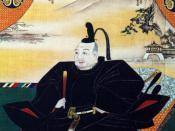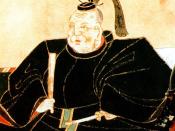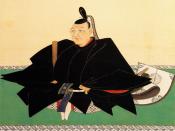The Tokugawa (or Edo) period (1603 - 1868) of Japan history saw the cultural stagnation of the nation that was frozen in self-isolation a time when most of the rest of the world was beginning to bristle with invention, trade, and discovery (Foster, "Early").
Within this 265 year period, the once respected samurai began to struggle not only on a financial level but also on a pride and respect level, with more and more of its status being trampled underfoot as the Tokugawa period went on. This isolation policy did foster a stronger self-reliance among the Japanese early on, but as the isolation and freeze policies were dragged out over two and a half centuries, the culture began to suffer: daimyo were beginning to be strapped for cash by the 1800s, the samurai's status was in a downward spiral since 1730, and the symbols of samurai status were able to me bought by non samurai, merchants and farmers in particular (Foster, "Late," "Culture").
This downward spiral in the Tokugawa period can be seen in many different sources from the period, but two of the most prominent for this time are the texts of Chushingura and Musui's Story. Chushingura was a puppet play written about the actions of Forty-Seven Ronin (master less samurai) who avenged their daimyo's forced seppuku (suicide) by breaking into the mansion of the rival daimyo who had forced the act and killed him (Izumo, Shoraku and Senryu 1). The puppet play was written in 1748, and showcased an early Tokugawa period with loyal, respected samurai, a stable economy and law system, and the value of honor. Almost 100 years later, Katsu Kokichi will write his autobiography, Musui's Story. Unlike Chushingura, Musui's Story presented a Tokugawa a century later: a culture that had transformed from an honorable,


